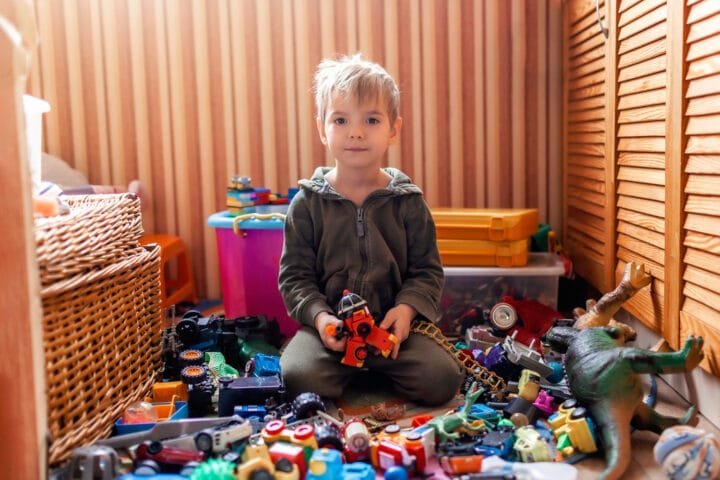The Secret to Raising Confident Kids: Setting Goals That Work
If you want to know more ways to raise children who are confident, read Confidence is My Superpower. a Book for Kids on Believing in yourself and building self-esteem.
How important is goal setting for Families?
If you’re searching for ways to help guide your child through their challenges and help them develop their mindset, look into this book: Growing Mindset Journals for Boys. The Journal is a place to Take on Challenges, Establish goals, and Dream Big.
Tips: Start small by creating goals with your family during gatherings. Talk about what is essential to your child, and discuss ways you can assist your child’s goals. Reviewing these goals frequently and modifying them as necessary is a good idea. Encourage progress and ensure everyone stays motivated!
Examples: During a family gathering, you could set a goal for your child to read a single book a month. Each month, you will review their progress, talk about the book they’ve read, and end the month with a little reward or a family-friendly activity you choose.
The Art of Goal Setting: What Goals Do You Have For Your Child?
Then, let’s move on to the exciting part: setting objectives! Begin by asking yourself, “What goals do you have for your child?” Look beyond the studies. Think about their personal growth, social abilities, and maybe even passions. Making goals tailored to your child’s strengths and passions makes the journey enjoyable for the child. It also gives them a feeling of ownership and makes the process pleasant and rewarding.
Recommendations:
- Involve your child in goal-setting.
- Talk to them about their hopes as well as their interests.
- Use the information to establish individualized goals.
- Reduce larger goals to smaller and more manageable ones so you don’t get overwhelmed and keep the momentum moving.
Examples: If your child loves animals, you could make it a point to teach them about a new animal each week. You could have them research, create images, or even discuss fun facts with their family. The idea of breaking it down into daily tasks is easy and makes it enjoyable.

1.Personal Development Goals: Boosting Confidence One Step at a Time
Tips: Make a habit of recognizing small victories every day. It doesn’t matter if it’s getting homework done or just showing compassion; positive reinforcement goes an incredibly long way. Please ensure they record their achievements so you can track improvements as time passes.
Examples: If your child is shy, make an objective for them to greet at least one person every week. Following each successful interaction, celebrate by engaging in activities you enjoy together, such as going to the park or having extra screen time. An excellent book that can help you on your way is Confidence Is My Superpower: A Book for Kids on Believing in Yourself and developing self-esteem.
2.Fostering Independence and Responsibility: Preparing for the Future
The question, “What goals do you have for your child?” frequently brings ideas of independence and accountability. They are the essential qualities that each child must acquire to manage adulthood successfully—beginning with a simple task or coordinating their homework. As time goes on, you can introduce more complicated activities that require a lot of making decisions.
Tips: Assign age-appropriate responsibilities and gradually increase the complexity level as your child develops. Allow them to make decisions, and guide them through the consequences–positive or negative. They will acquire valuable life lessons in an environment that is safe for them.
Examples: Begin with simple tasks such as setting the table to eat dinner. When your child has mastered the basics, you can introduce additional accountability, such as creating and organizing a dinner for the family each week. It helps them develop the importance of making decisions, managing time, and being a part of the household. If you want to improve organization, think about using the weekly planner notepad to keep track of assignments and other responsibilities.
3.Educational Goals: Fueling a Love for Learning
If you want to achieve educational objectives, it isn’t about more than just good grades. It’s about instilling a passion to learn. Create goals for academics, like getting better at a particular field or acquiring an entirely new skill. But do not end at that point. Make sure your home is a place that encourages the curiosity of your children. Encourage exploration and ask questions to make learning an enjoyable experience.
Tips:
- Encourage a routine that involves reading daily or other problem-solving exercises.
- Use real-life experiences, such as making meals or preparing budgets, to help teach science and math concepts.
- Praise students not just for outcomes but for your effort and curiosity.
Examples: Set a goal to help your child master multiplication tables with entertaining games or cooking activities. For instance, when baking, have them calculate ingredients by multiplying the recipe. It can transform learning into a hands-on experience. If you need more information on motivating and teaching your child, The Seven Habits of Highly Effective Teens is a fantastic guide.
4.Building Critical Thinking and Problem-Solving Skills: The Key to Success
Problem-solving and critical thinking are abilities that will help your child for the rest of their life. Set goals that force your child’s ability to think critically and create creative solutions to problems is crucial. Involve them in games like puzzles, games of strategy, or engaging conversations. Let them inquire and consider various perspectives.
Encourage open-ended questions such as, “What do you think would occur when …?” and “How would you solve this problem?” It encourages the ability to think critically. Incorporate games and tasks that require strategy and planning while discussing the thought procedure afterward to help reinforce your learning.
Examples:
- Play a weekly game night for the family, using strategy-based games such as checkers, chess, or puzzles.
- Talk about the different strategies that your child employed throughout the game.
- Invite them to share the process of thinking. It helps them articulate their thoughts and take lessons through each match.

5.Social and Emotional Goals: Creating Empathetic and Communicative Individuals
Today, communicating and being socially aware is just as vital as academic accomplishment. Make sure you set goals that are focused on developing empathy and building communication skills. Help your child understand and be respectful of the opinions of others. Learn to help them communicate their feelings and thoughts clearly and respectfully.
Tips: Role-play different social scenarios to teach your child empathy and communication. Encourage active listening with conversations in which they repeat their heard information to demonstrate comprehension. Talk about emotions frequently and demonstrate the positive management of emotions.
Examples: Set a goal for your child to express gratitude daily by expressing appreciation to those who have provided assistance or helped them feel happy. It is a simple way to build empathy and improve communication ability. It is also possible to have them share their feelings in various scenarios to increase their emotional awareness. To learn how to communicate effectively with children younger than them, How to Talk so that children will Listen is an excellent reference.
6.Physical and Health Goals: Building a Foundation for a Healthy Life
Physical health is at the core of your child’s overall health. Create goals that encourage regular fitness, healthy eating, and mental well-being. Participate in family activities such as strolls, sporting events, or even yoga. Please include your child’s participation in meal preparation so that they can learn about eating healthy and nutritious choices.
Tips:
- Make physical activity enjoyable by trying different sports and outdoor activities as a family.
- Plan your weekly meals with your family and let your child select nutritious alternatives.
- Include mindfulness-based practices such as yoga or deep breathing to help them deal with stress.
Examples: Set a goal to encourage your child to participate in a new exercise each month. This could be biking, swimming, or playing a different sport. Involve them in planning and cooking nutritious meals once per week. Teach them about healthy eating with a hands-on, fun method.
7.Nurturing Creativity and Hobbies: Unlocking Hidden Talents
It’s not just for the artists; it’s all for anyone! Inspire your child to discover your creative side by establishing goals for hobbies and creative expression. It doesn’t matter if it’s drawing, playing music, or acquiring something that they enjoy; these pursuits are vital for healthy development.
Tips:
- Provide a variety of artistic outlets, such as art supplies and musical instruments or hobby kits.
- Allow your child to play.
- Create periodic “creativity hours” where they can engage in their favorite hobbies without pressure.
- Recognize their work and inspire the kids to share their creativity with others.
Examples: If your child loves drawing, establish an objective to finish one weekly drawing. When the month is over, they host an art-themed “art show” at home where they can display their art. This will inspire imagination and boost confidence when they show off their skills with relatives.
8.Teaching Financial Literacy and Career Awareness: Preparing for the Real World
Career awareness and financial literacy are goals for the long term that help your child be prepared to be successful in the future. We will begin with the basics of financial management, such as earning money, saving, and spending smartly. As they age, teach them advanced concepts such as investing and budgeting.
Tips:
- Give your child small amounts of money and help them split it between saving, spending, and donating.
- Use real-life scenarios to explain financial concepts.
- Inspire them to consider different career options by talking about the careers of their heroes and expose them to various sectors through videos, books, or even visits.
Examples:
- Set a goal that your child saves towards a purchase, for example, games or toys, and save a portion of the allowance.
- While doing so, talk about the importance of budgeting and the idea of delaying satisfaction.
- To increase their awareness about careers, invite youngsters to look into different career options through shadowing family members working for a few hours or researching jobs they’re interested in.
For further insights on the development of kids’ character and life skills, please read my article on building strong character Skills for Children: The How-to Guide for Nurturing Positive Development.

Conclusion: Keep Evolving and Growing Together
What goals do you have for your child right now? Keep in mind that establishing goals shouldn’t be a single task. It’s an ongoing process. Continue reviewing and revising objectives as your child matures and develops in their passions. Be involved, be proud of their achievements, but most importantly, take time to enjoy the journey with them.
Schedule regular check-ins to discuss progress and adjust goals if required. Please help your child take note of their successes and challenges. It helps keep them motivated as well as keeps your family members connected.
Every few months, gather as a family to discuss the goals you’ve made. Reward the achievements, discuss any issues, and adjust your goals so that they remain current. It ensures your child is engaged and motivated and shows that goal setting is an ever-changing and dynamic procedure.
For more support for your child’s development of courage and bravery, check my blog post about five life-changing reasons why Courage and Bravery are essential for teenagers Today.





































































